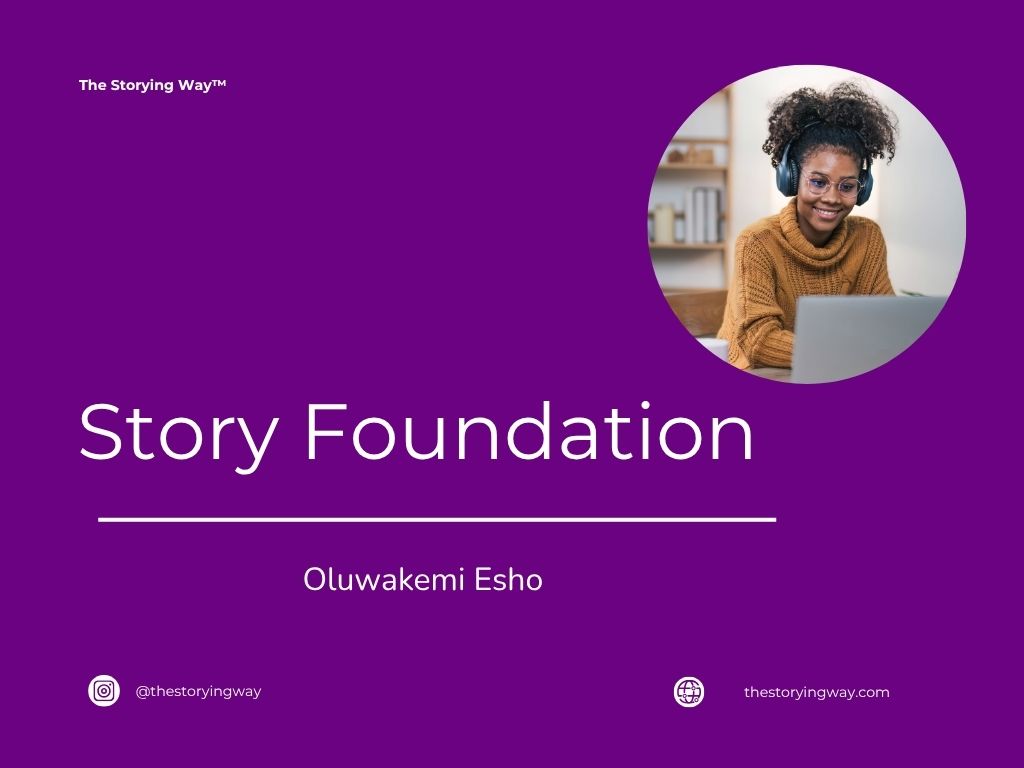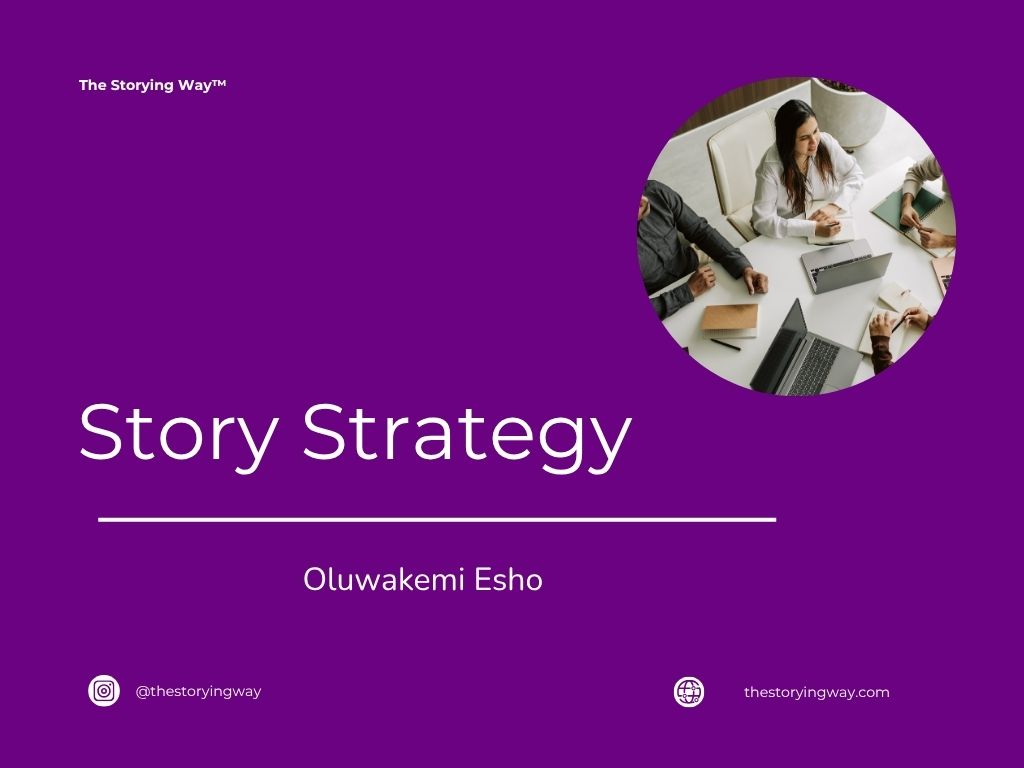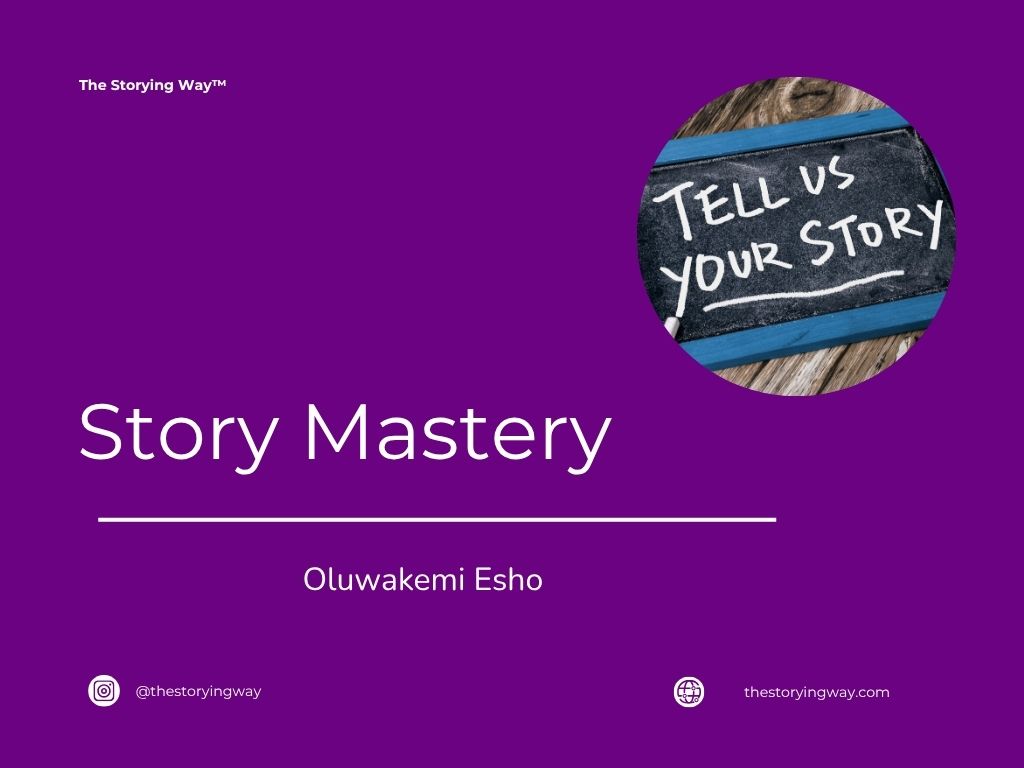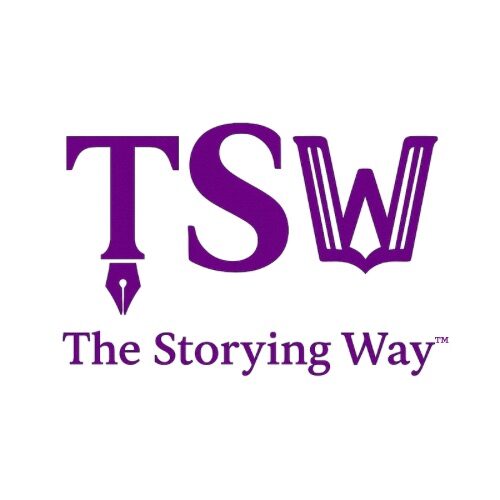The Storying Method™
During the COVID lockdown, I hosted several writing classes because I love to teach and share my knowledge. I am telling my mum what I did and how I did it, when my sister walks in and tells me of a course she wants to buy.
Her passing comment reseeded an idea. Just days earlier, while reading a book, a thought crept into my mind. Before it could take root, I dismissed it. The idea was to develop a storytelling curriculum. But my excuse was that I didn’t have people to teach it to yet. The underlying issue was that I didn’t want to take the risk of investing so much time and effort into it.
But my sister’s excitement about taking a course got me thinking. She’s looking forward to gaining new knowledge because the course creator decided to share his knowledge, so why should I allow fear to hold me back or deprive someone of the joy of learning something new?
So, I dismissed the risk and watered the idea. I reviewed the books I’ve read. I refined the frameworks I developed. I retrieved the stories I’ve crafted. And I put it all together to create The Storying Method™. I called it The Storying Method™ because story isn’t just something we tell, it’s a way we lead.
This 3-part course will equip you with all you need to deploy storytelling strategically so that you can form strong connections with your audience, influence decisions and action, and make a lasting impact.
If you’ve ever felt the pull to lead with story but you don’t know how, this is where to begin. And I’m on this journey with you every step of the way.
Story Foundation

It was the second day of a summit I attended. The energy in the room was low. Many of the attendees had gone out to the exhibition stands or other workshops.
I was getting bored as speaker after speaker mounted the podium to stand on existing protocols before delivering their speech.
They sounded like parrots repeating the prior speaker’s words, and the panel sessions were not any different.
But there was this 15-year-old boy, Ibrahim, who revived the room. He sat on a panel with other fairly young speakers. And he spoke first.
His words immediately grabbed me by the shoulders and pulled me out of the sinking ship of repetitive and boring talks.
He turned his abstract topic of insecurity into a tangible, relatable experience by casting his story at the centre of his talk.
He made us see how he’d lived through insecurity and how he bears the scars.
Story Strategy

Growing up, I loved to do many things. I baked. I crocheted. I did beadwork. I tie-dyed clothes. If it tickled my fancy, I did it.
When I was excited about baking cakes, my mum bought me a professional mixer. When I dabbled with crocheting and beadwork, she took me to her colleague to teach me. And when I moved on to tie-dye, she bought the clothes and chemicals I used to experiment.
Not once did she complain that I was wasting money, nor did she force me to focus on one thing.
There was no way to understand then why she was doing all this other than as a mother supporting her child, but I found out why later on…
…It’s no surprise that she’s still so supportive of my creative expressions. And that’s why I can do what I do.
Story Mastery

I’m watching the 7 p.m. news with my dad. My mum has handed over the baton of watching Politics Today to him, and he enjoys it.
On this day, the news anchor is talking about the state of the nation, and the issue of the oil refinery and how it’s been poorly maintained.
I don’t understand a thing about what he’s saying because he’s quite technical, but my dad gets it. He’d worked in that field for over 30 years, so the subject is a piece of cake to him.
I ask him what they’re talking about, and he pauses the TV and turns to me. He starts to speak, then stops.
I sense that was his way of thinking of the best way to break down this information in a way that I’ll get.
The Connect. Influence. Impact Framework™
It’s a late Saturday night. The house is quiet, but my mind is racing. I want to make sure I’m on the right track. I want to make sure that my business is serving a core purpose. But I don’t want to be a judge in my own case. Nemo judex in causa sua.
So I ask my sister, ‘What do you think is the purpose of my work?’
Members Portal
The Storying Way™ Pillars
I’m in my bed, reading Stories Sell by Matthew Dicks, when I stumble across ‘Homework for Life,’ a five-minute daily habit of recording moments you might forget that could become a powerful story.
I’m intrigued. I’m a big advocate of story banking, but I’d never thought of intentionally looking into moments from my day, let alone making it a daily habit.
I decide to give it a try. On the first day, I write about a moment of realisation I had about a friend. On the second day, I write about my brother coming to my room to ask me to buy him shawarma just as I was about to go ask him to buy me shawarma. On the third day, I notice a pattern as I was thinking more about Homework for Life.
Members Portal
Get Storying Right
I scroll through story after story in my story bank. I’m looking for the right one to anchor the Connect. Influence. Impact. framework. But nothing fits. I open my story moments Excel sheet. Still nothing. I have stories. But I need the story; the one that would serve the purpose.
Then a moment I hadn’t captured comes to mind, a conversation with my sister. I’d recorded part of it as a voice memo. I press play. I listen. She says something that holds my attention. I latch on to it. That’s the core of the story.
I recall the events around that conversation, and I craft it into a story. Now I have it.
The right story.
Getting storying right is choosing the right story, crafting your story, and using your story.
Find out how to get storying right.
Members Portal
The Storying Way™ Toolkit
I’d packed up almost everything, but my swivel chair. I’d delayed it for days, thinking it’d be easy to disassemble, since I’d assembled it myself.
A friend had come over to help. The first screw was out. Then the next. We high-fived as the armrest came off and the rollers came unstuck. It was easy until we had to remove the pump mechanism.
We pulled it. We twisted it. We tried everything we could. But nothing worked. And then we realised we needed a rubber mallet to release the gas pump. Now I had hours left before the movers arrived, and a mechanism that wouldn’t come unstuck. I called friends who I felt might have, but they didn’t.
Then I went for lunch with a friend, and I asked if her husband had a mallet. And he did. She drove me to hers, grabbed it, and came back to help. With two hits, the pump came loose, and my chair was ready to go.
These storytelling toolkits are like a rubber mallet. Just like using the mallet released a stuck mechanism, using the toolkits will help you unlock parts of your story that are stuck.
You don’t need to force your story; you just need to use the right tools designed to help your story come unstuck. So whether you’re just starting, or refining what you already know, these toolkits will help you move your story forward.
And you can access yours on the members portal.
Members Portal
Join The Storying Way™
Join a community of like-minded leaders who want to connect, influence, and impact. There’s no better place to be. See you on the inside.


